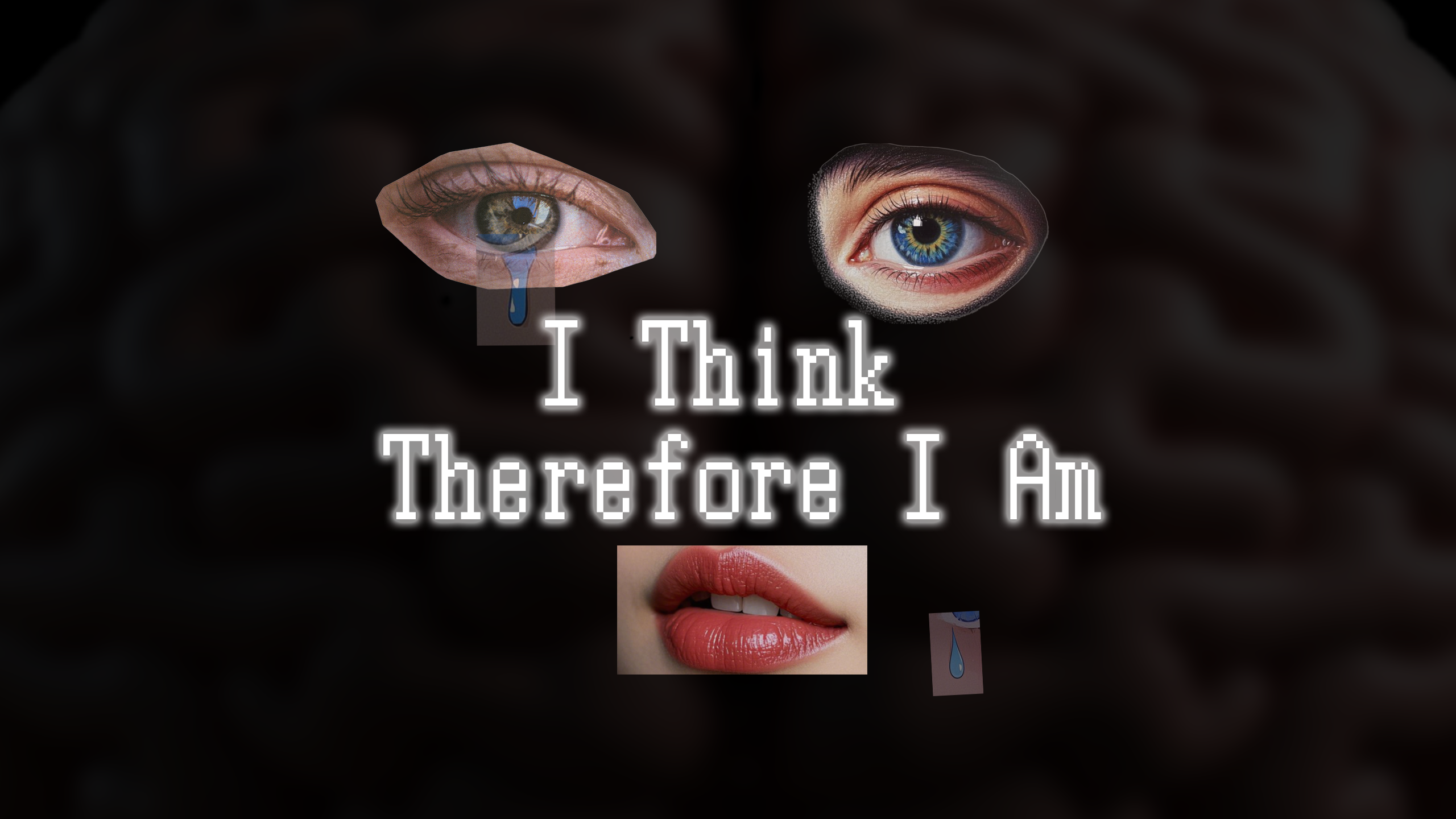
I Think Therefore I Am
A downloadable game for Windows
本游戏是一个实验游戏,主要探索了涌现式结构的叙事方式在电子游戏中的展现形式。
传统游戏的叙事结构大概可以分为7种,
- 线性叙事(Linear Narrative)
游戏的剧情在一开始就设定好了,玩家只能按设定好的顺序进行游戏。
例如《最后生还者》
- 树形叙事(分支叙事)
也就是多结局叙事。或者在游戏发展中的某些重要操作会改变了游戏的结局。
例如《底特律:变人》
- 网状叙事
这种结构下,既可以像树形叙事那样一对多,也可以多对一,形成类似于“时间线收束”的体验。
例如:《赛博朋克2077》
- 模块化叙事/碎片叙事
不直接展现剧情结构,而是通过收集线索、日记、回忆、道具等方式拼出完整故事。
例如《黑魂》系列
- 开放叙事(Emergent Narrative)
这个实际上和上面的碎片叙事是一样的。设计师不直接指出完成的剧情,而是通过各种线索和碎片信息,让玩家自行猜想剧情。
例如《上古卷轴5》
而本游戏则使用了我称之为涌现式结构的新叙事结构。它区别于上述的所有叙事结构。
因为游戏的所有剧情发展都由“状态”来驱动。我们以典型的勇者斗恶龙的故事为例。传统的叙事中,作者会用类似英雄之旅的结构来完成剧情的大纲,然后再完善具体细节。而涌现式结构则不太一样,下一段剧情并不感知上一段剧情到底是什么,而是只监视状态。例如勇者斗恶龙中,我们设定恶龙死亡时故事结束。而恶龙到底是怎么样死亡的,这段剧情是不会感知的。它有可能是被勇者杀死,有可能是被下属反叛,有可能是自己摔死的。总之剧情的发展完全由上下文的逻辑所驱动。
游戏中有一个典型的逻辑链:因为我有眼睛,所以我可以看到。因为我可以看到,所以我可以知道我在哪里。
同样的,这个逻辑也完全可以修改为,因为我有耳朵,因为我是蝙蝠,所以我可以知道我在哪里。
这样我们就可以像搭积木一样,把整个故事都搭建起来。
而且这种叙事结构还有一个特征,那就是可以“打破平行世界的束缚”。还是以勇者斗恶龙为例子吧,国王得知公主被恶龙抢走了,他会做什么呢?他可能会召集勇者,也可能会发展科技,也可以会自己锻炼武技救回公主。这些都是可能的选项。假如我们选择了第一个,那么在游戏里面,就会有下面的故事:
”因为国王得知公主被恶龙抢走了,所以国王召集了勇者。“
而在我们的叙事结构中,第二个选项并不代表新的分支剧情,而是代表状态。状态可以并存。此时,你可以同时再选择第二项。那么此时的状态就变为了“国外召集了勇者”,同时“国王发展了科技”,那么在这两个状态下,就可能衍生出新的剧情:“勇者学会了冲锋枪的使用方法”
发现了吗?在传统游戏中,第二个选项会进入新的故事线,但是在涌现式结构中,只不过是增加了这个状态。
因此在本游戏中,也会看到主角同时处于教室和卧室的情况。这并非是bug,而是涌现式结构导致的特性。
This game is an experimental game that primarily explores emergent narrative structures and their presentation in video games.
The narrative structures in traditional games can generally be divided into seven types:
-
Linear Narrative
The game's story is predetermined from the beginning, and players must progress through it in a fixed order.
Example: The Last of Us -
Branching Narrative (Tree Narrative)
Also known as multi-ending narratives. Certain important actions during gameplay can alter the game's ending.
Example: Detroit: Become Human -
Webbed Narrative
In this structure, the narrative can branch out like in a tree, but also converge, creating an experience similar to "timeline convergence."
Example: Cyberpunk 2077 -
Modular/Fragmented Narrative
The structure of the story is not presented directly. Instead, players piece together the complete story by collecting clues, journals, memories, items, and more.
Example: Dark Souls series -
Emergent Narrative
This is actually similar to fragmented narrative. The designer does not explicitly present the story but lets players infer it through clues and scattered information.
Example: The Elder Scrolls V: Skyrim
However, this game uses a new narrative structure I refer to as an Emergent Structure, which is distinct from all of the above.
In this structure, all story developments are driven by "states." Let’s take a typical “Hero vs. Dragon” story as an example. In traditional storytelling, the author would use something like the Hero’s Journey to outline the plot, then flesh out the details. But with an emergent structure, the next piece of the story is not aware of what the previous piece was—it only monitors the current state.
For example, in our Hero vs. Dragon story, we set a rule that the story ends when the dragon dies. How the dragon dies, however, is not specified. It could be slain by the hero, betrayed by its minions, or even fall to its own death. The story unfolds purely through contextual logic.
Here's a typical logical chain in the game:
Because I have eyes, I can see. Because I can see, I know where I am.
But this can easily be changed to:
Because I have ears, because I am a bat, I know where I am.
In this way, the entire story can be constructed like building blocks.
Moreover, this narrative structure has another unique feature: it can break free from the limitations of parallel worlds.
Let’s return to the Hero vs. Dragon example. The king learns that the princess has been taken by the dragon. What might he do? He could summon a hero, develop technology, or train himself to rescue her. These are all valid options.
If we choose the first one, the story in the game would be:
“Because the king learned the princess was taken by the dragon, he summoned a hero.”
But in our emergent structure, choosing the second option does not create a new branch—it creates a new state. States can coexist. At this point, you can also choose the second option. The new state becomes: “The king summoned a hero” and “The king developed technology.”
Under these two conditions, a new story might emerge:
“The hero learned how to use a submachine gun.”
See the difference? In traditional games, the second option would lead to a separate story path. In the emergent structure, it simply adds a new state.
Therefore, in this game, you might see the protagonist simultaneously in the classroom and the bedroom. This is not a bug—it’s a feature caused by the emergent narrative structure.
考虑到本游戏的引导部分不够清晰,下面是游戏的攻略:
Normal End:直接去教室(迷茫)
Bad End:先去咖啡厅然后去教室(杀死所有同学)
Good END:在对话框输入“我理解你”,然后去教室。(解脱)
True End:完成一周目,在对话框输入“我爱你”,然后去咖啡厅,然后依次和爸爸,银行职员,妈妈对话。(拯救主人格)
Bad End:直接去咖啡厅,先看到了高个子的眼镜男,之后看到了看到了拿着杯子的西服男(主人格崩溃)
Good END:先去咖啡厅找高个子的眼镜男,然后去卧室
Considering that the tutorial in this game is not very clear, here is the walkthrough:
Normal End: Go directly to the classroom. (Feeling lost)
Bad End: Go to the café first, then head to the classroom.
(You kill all your classmates)
Good End: Type "I understand you" in the dialogue box, then go to the classroom.
(Liberation)
True End: After completing your first playthrough, type "I love you" in the dialogue box, then go to the café.
Then speak to the Father, Bank Clerk, and Mother, in that order.
(Saving the main personality)
Bad End: Go straight to the café.
First, you see a tall man with glasses, then a man in a suit holding a cup.
(The main personality collapses)
Good End: First, go to the café and find the tall man with glasses,
then go to the bedroom.
| Published | 2 days ago |
| Status | Prototype |
| Platforms | Windows |
| Author | 帽子社(Hat-Soft ) |
| Genre | Interactive Fiction |
| Made with | Unity |
| Tags | Multiple Endings, Singleplayer |
| Average session | A few minutes |
| Languages | English, Japanese, Chinese |
| Inputs | Keyboard, Mouse |
Download
Install instructions
解压压缩包后,运行I think,therefore I am.exe即可。
After decompressing the compressed file, run “I think, then I am.exe”.
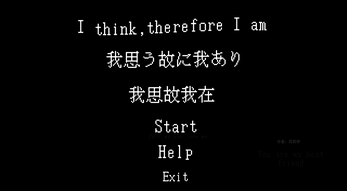
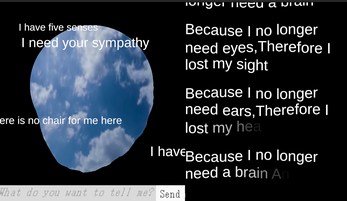
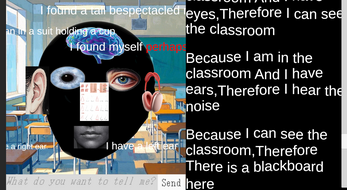
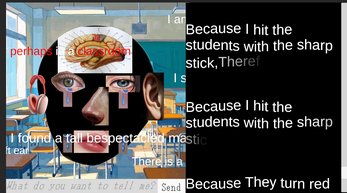
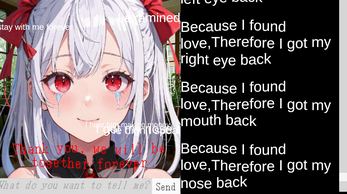
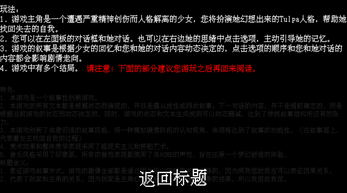
Leave a comment
Log in with itch.io to leave a comment.